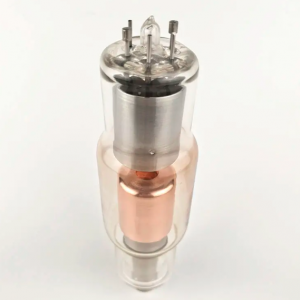Medical imaging has changed the way healthcare professionals diagnose and treat a variety of diseases. X-ray imaging, in particular, plays a vital role in allowing doctors to visualize the internal structures of the human body. At the heart of this powerful diagnostic tool is the medical X-ray tube, an engineering marvel that continues to evolve and revolutionize the field of medical imaging. In this article, we'll delve into the intricacies of this indispensable device and explore how it can pave the way for improved patient care and medical advancements.
Overview of medical X-ray tubes:
Medical X-ray tubes are complex technologies that produce X-rays, allowing medical professionals to obtain detailed images of bones, tissues, and organs. With its ability to penetrate the human body, X-ray technology has become an important tool in diagnosing everything from fractures to tumors, infections and lung disease. The tube consists of a cathode and an anode, both of which are enclosed in a vacuum-sealed enclosure. When an electric current is applied, high-speed electrons are emitted from the cathode and accelerated to the anode, producing X-rays.
The evolution of medical X-ray tubes:
Over the years, medical X-ray tubes have made significant advances in improving image quality, reducing radiation exposure, and improving patient safety. Thanks to ongoing research and development, new tube models now offer greater efficiency, precision and cost-effectiveness. By integrating cutting-edge technology and innovative designs, manufacturers are able to address the limitations of older models to create a safer, more accurate imaging experience for patients and medical professionals alike.
Advantages and features of modern medical X-ray tubes:
1. Image quality: With the advent of digital radiography, image quality has improved substantially. Modern X-ray tubes are designed to produce sharp, clear and detailed images, aiding in accurate diagnosis and better treatment planning.
2. Reduce radiation dose: Concerns about radiation exposure have led to the development of X-ray tubes that minimize radiation dose without affecting image quality. Advanced imaging technologies such as pulsed fluoroscopy and automatic exposure control optimize radiation output and patient safety.
3. Improved efficiency: Medical X-ray tubes now run at higher speeds, reducing the time required for image acquisition. This not only improves patient throughput but also improves diagnostic efficiency, allowing healthcare professionals to provide timely and effective treatment.
4. Enhanced durability: Modern X-ray tubes are built to withstand the rigors of daily use in busy medical environments. Their improved durability reduces the need for frequent replacement, minimizing downtime and overall costs.
Marketing medical X-Ray tubes:
To stay ahead in the highly competitive medical imaging industry, manufacturers need to effectively market their advanced X-ray tube technology. By focusing on the unique features and benefits of its products, the company can highlight the benefits of its X-ray tubes: superior image quality for accurate diagnosis, reduced radiation exposure to ensure patient safety, increased efficiency to streamline workflow, and long-lasting durability to ensure patient safety. Minimize maintenance costs. Marketing campaigns should be targeted at healthcare facilities, emphasizing the positive impact these innovative x-ray tubes have on patient outcomes and overall quality of care.
in conclusion:
Medical X-ray tubes remain an important tool in medical imaging. Its developments and advances have revolutionized the field, improving image quality, reducing radiation exposure, increasing efficiency, and enhancing durability. As medical professionals strive to provide the best patient care, they rely on the continued innovation and excellence demonstrated by medical X-ray tube manufacturers. With continued research and development, the future of medical imaging will usher in more promising advancements, ensuring a safer, more accurate, and more efficient diagnostic journey for patients around the world.
Post time: Nov-13-2023



